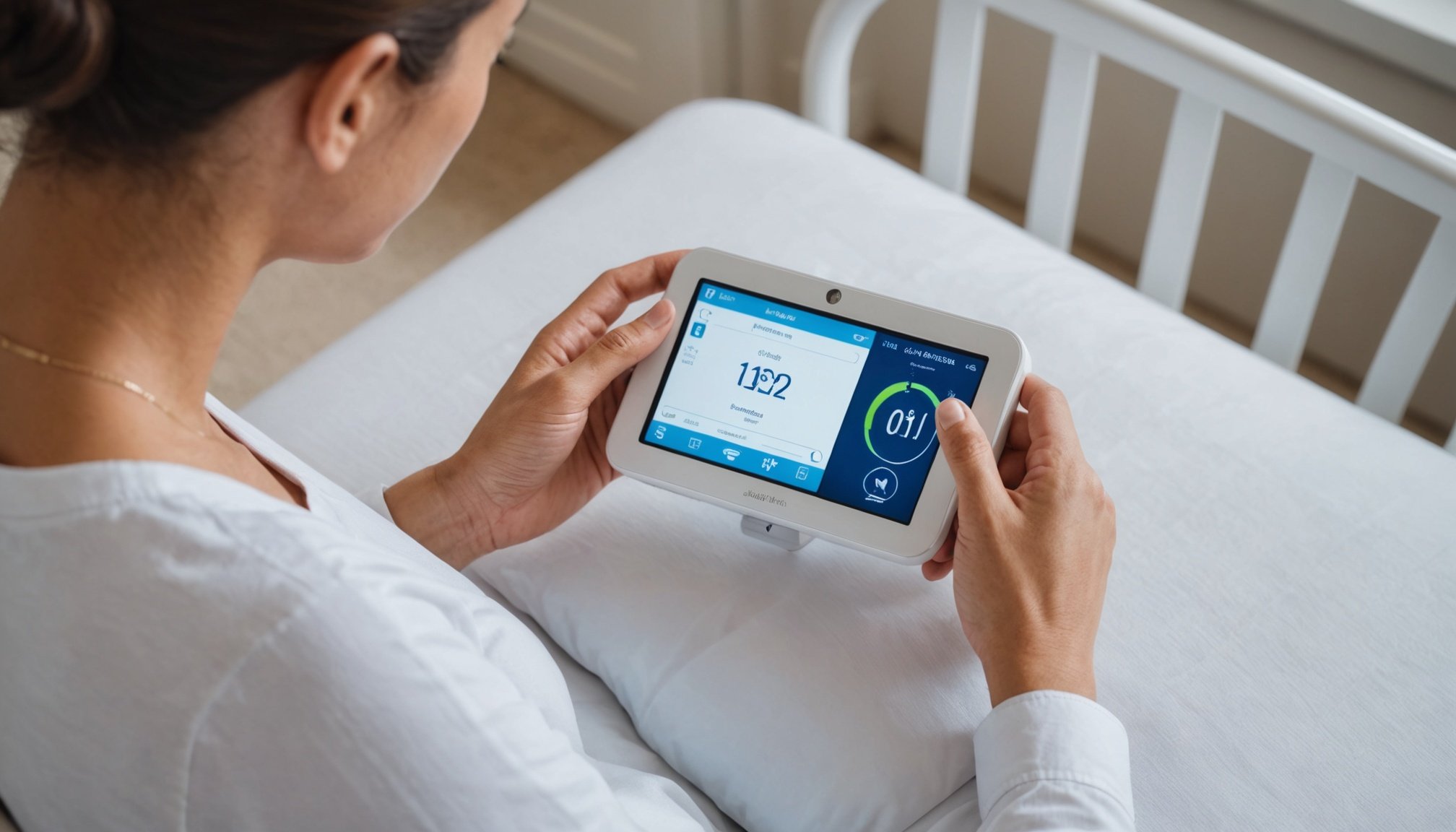Overview of UK Guidelines for At-Home Wireless Fetal Monitoring Devices
Navigating the UK guidelines governing at-home fetal monitoring is crucial to ensuring maternal and fetal safety. The regulations detail the safe use of wireless monitoring devices, which have become increasingly popular due to their ease and convenience. These guidelines, formulated by authoritative bodies, are tailored to guarantee that both mothers and unborn babies are monitored appropriately outside clinical settings.
The Medicines and Healthcare products Regulatory Agency (MHRA) plays a pivotal role in overseeing these devices’ approval and monitoring safety. They ensure manufacturers comply with stringent standards before any at-home fetal monitoring device enters the market. UK guidelines stress the importance of using these products as supplemental tools, not replacements for professional medical advice.
In the same genre : Exploring the UK”s Guidelines for Fetal Spinal Abnormality Screening: Key Recommendations Unveiled
Adhering to these regulations helps minimise potential risks associated with wireless monitoring. Such measures not only safeguard users but also maintain consistency in healthcare standards. Consequently, medical practitioners can trust the data derived from such devices, leading to informed decision-making.
Understanding these key regulations empowers expecting mothers and healthcare providers to make informed choices. It fosters trust in the technology while emphasizing the importance of contacting healthcare professionals if any concerns arise during at-home monitoring.
Also read : Navigating Pregnancy Nutrition: The Latest UK Recommendations for Fish Consumption and Mercury Safety
Types of At-Home Wireless Fetal Monitoring Devices
As the demand for convenience in prenatal care rises, various wireless fetal monitoring devices have emerged. Understanding the types of devices available can help expectant parents make informed choices. Wireless fetal monitors generally fall into two primary categories: doppler monitors and sensor-based systems.
Doppler monitors utilise ultrasound technology to detect the baby’s heartbeats. These are typically handheld devices with probes that require manual placement on the abdomen. They offer ease of use and portability, but their precision can vary depending on the user’s ability to accurately position the device.
On the other hand, sensor-based systems include wearable technology that continuously monitors fetal activity. These devices, often in the form of patches or belts, provide real-time data and have the advantage of passively capturing information over extended periods.
When comparing features, consider factors like ease of use, connectivity (such as smartphone compatibility), and the depth of insight each device provides. Some models offer additional functionalities, like tracking maternal health indicators, which could be beneficial depending on the user’s circumstances.
Ultimately, selecting the right wireless fetal monitor involves weighing these features against personal needs and consulting healthcare professionals to ensure compatibility with one’s prenatal care plan.
Best Practices for Using Wireless Fetal Monitoring Devices
To ensure maternal and fetal safety during at-home monitoring, it’s essential to follow specific usage guidelines. Start by reading the manufacturer’s instructions carefully, familiarising yourself with the device operation and any accompanying software or apps.
A key monitoring best practice is to maintain consistency in how and when you monitor. Establish a regular routine that aligns with your healthcare provider’s advice. Avoid common mistakes like improper placement or irregular monitoring schedules, which can lead to inaccurate results.
When using the device, make sure it’s properly charged and functional. Position the monitor according to the guidelines for optimal data collection. Some wireless fetal monitors offer smartphone connectivity, allowing you to track and review data over time easily.
As you interpret the results, remember that these devices are supplemental and should not replace professional advice. If you encounter any unusual readings or feel concerned, seek professional help immediately to ensure timely intervention.
Incorporating these best practices can aid in effective home monitoring. Always consult your healthcare provider for personalised advice, and ensure your device is included in your prenatal care plan. Embracing these steps will help mitigate risks and enhance the benefits of at-home fetal monitoring.
Benefits and Risks of At-Home Wireless Fetal Monitoring
Navigating the landscape of at-home wireless fetal monitoring involves weighing potential benefits against associated risks. One of the primary benefits of monitoring at home is the convenience it offers expectant mothers. This technology enables continual tracking of fetal health, empowering parents with timely insights without necessitating frequent clinical visits. Moreover, some devices provide valuable data on maternal well-being, promoting a holistic approach to prenatal care.
However, these advantages come with certain risks associated with home use. The accuracy of results largely depends on correct device operation, emphasizing the need for strict adherence to guidelines. Inconsistent monitoring can lead to misinterpretations, potentially causing unnecessary anxiety or overlooking critical symptoms. Furthermore, overreliance on these devices might delay seeking essential professional medical advice.
To maximise the benefits while mitigating risks, users must follow monitoring best practices and remain vigilant about any deviations in fetal health. Regular consultations with healthcare providers ensure any concerns are promptly addressed, maintaining a balance between technology use and professional care. It’s crucial for expecting parents to remain informed and proactive in using wireless monitoring to enhance, rather than replace, traditional prenatal health assessments.
Comparisons with Traditional Fetal Monitoring Methods
Understanding the distinction between traditional monitoring and wireless fetal monitoring is essential for expectant parents exploring their options. Traditional methods rely on clinical settings where professionals utilise devices like cardiotocographs to measure fetal heart rate and contractions. These methods offer high accuracy due to professional oversight.
In contrast, wireless monitoring provides flexibility by allowing monitoring at home. It encompasses devices such as doppler monitors and sensor-based wearables. These innovative options enable continuous data collection, enhancing convenience for future parents. Yet, while traditional systems are regarded for their precision, at-home devices offer a trade-off between accessibility and the need for proper operation.
Assessing effectiveness depends on context. For instance, at-home devices shine in low-risk pregnancies, supporting regular monitoring without frequent clinical visits. However, in cases necessitating detailed assessments, traditional methods remain indispensable.
A crucial consideration is knowing when to transition from home use to professional care. Parents should consult healthcare providers to evaluate when traditional monitoring might be more beneficial. This decision ensures that the advantages of both approaches are maximised, providing a comprehensive prenatal care strategy for the well-being of both the mother and the fetus.
Legal Considerations and Regulatory Updates
Navigating the legal aspects surrounding at-home wireless fetal monitoring devices requires a solid understanding of compliance requirements. The UK has implemented stringent regulations to ensure that these devices are safe for use by expectant mothers. Adhering to these laws is crucial as it affects both manufacturers and users, safeguarding maternal and fetal health.
Recent updates in regulations highlight an ongoing review process by regulatory bodies like the MHRA, ensuring that all devices meet the evolving safety standards. These bodies are responsible for conducting assessments and audits to guarantee continual adherence to regulations. It’s vital for users and manufacturers to stay abreast of these updates, as non-compliance could lead to penalties or product recalls.
Moreover, understanding the legal framework aids manufacturers in designing devices that align with regulatory expectations. For users, being informed about the compliance requirements fosters trust in the monitoring process, encouraging informed and safe use.
For pregnant women and healthcare providers, these updates and regulations play a critical role in facilitating safe at-home monitoring. Ensuring that devices meet legal standards helps bridge the gap between technology and professional care, ultimately ensuring the safety and well-being of both mother and child.
Official Resources for Further Reading
Staying well-informed on UK guidelines for at-home fetal monitoring is crucial for expectant mothers and healthcare providers alike. Accessing official guidelines and healthcare resources helps ensure safe and effective usage of these devices.
When seeking supplemental information, the Medicines and Healthcare products Regulatory Agency (MHRA) website serves as a primary source. This regulatory body offers comprehensive insights concerning device safety, updates, and compliance requirements crucial for manufacturers and users.
Another valuable resource is the National Health Service (NHS) website, providing detailed information on pregnancy care, including the efficacy and limitations of at-home monitoring. It can guide expecting families through the complexities of prenatal care while emphasizing the importance of professional medical support.
Expectant parents may also explore resources from expert organisations like the Royal College of Obstetricians and Gynaecologists (RCOG). They provide a wealth of data through their publications and guidance documents, fostering a better understanding of fetal monitoring practices.
For those curious about research articles and studies regarding at-home fetal monitoring, databases such as PubMed offer open-access studies. These publications enable deeper insights into recent technological advancements and their implications for maternal-fetal health. Engaging with these materials supports informed decisions, solidifying trust in both technology and professional healthcare.











